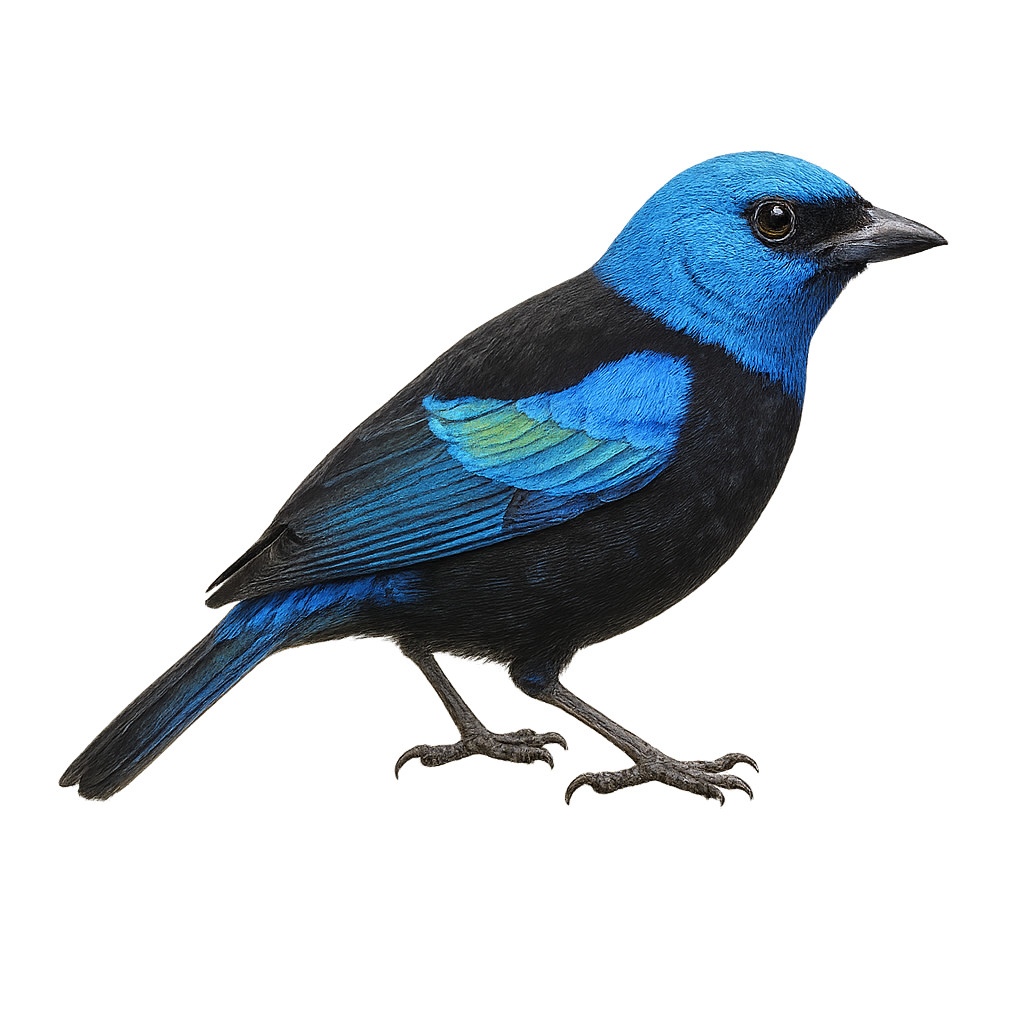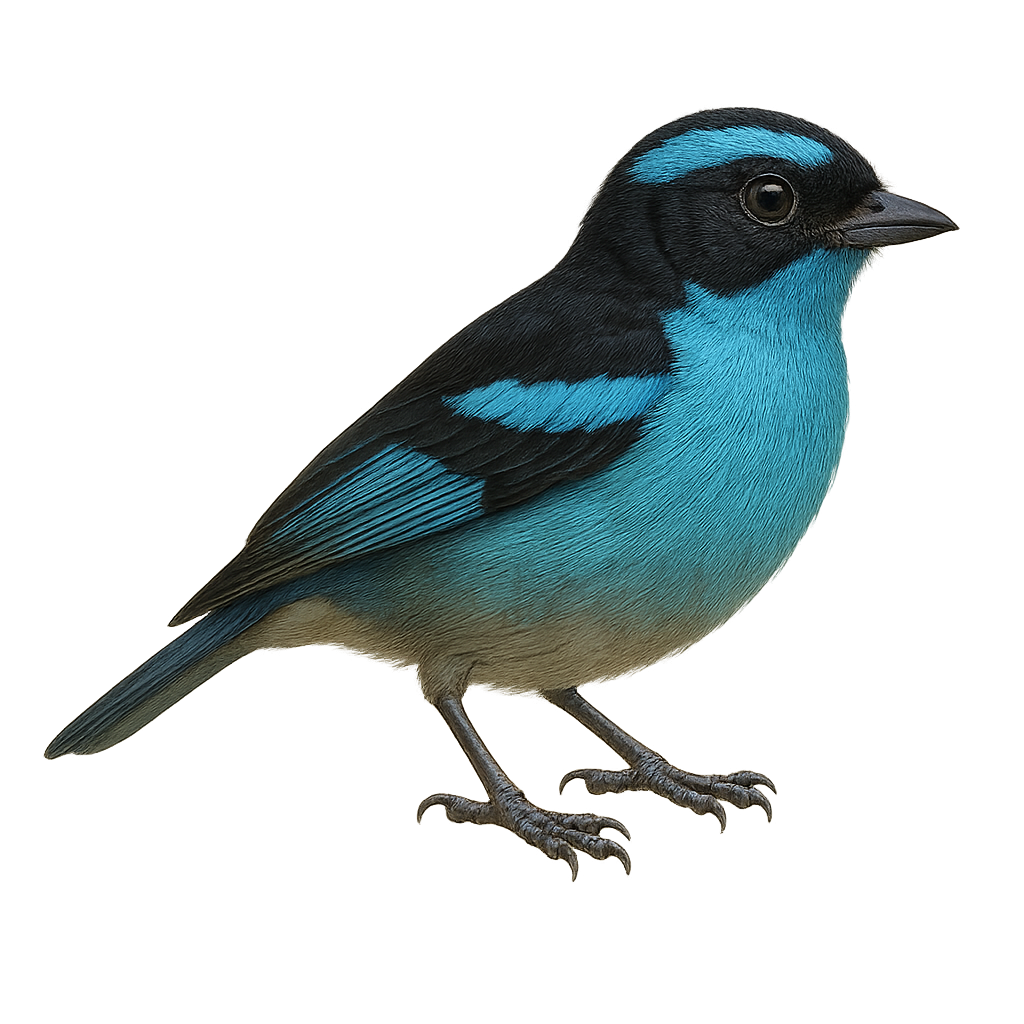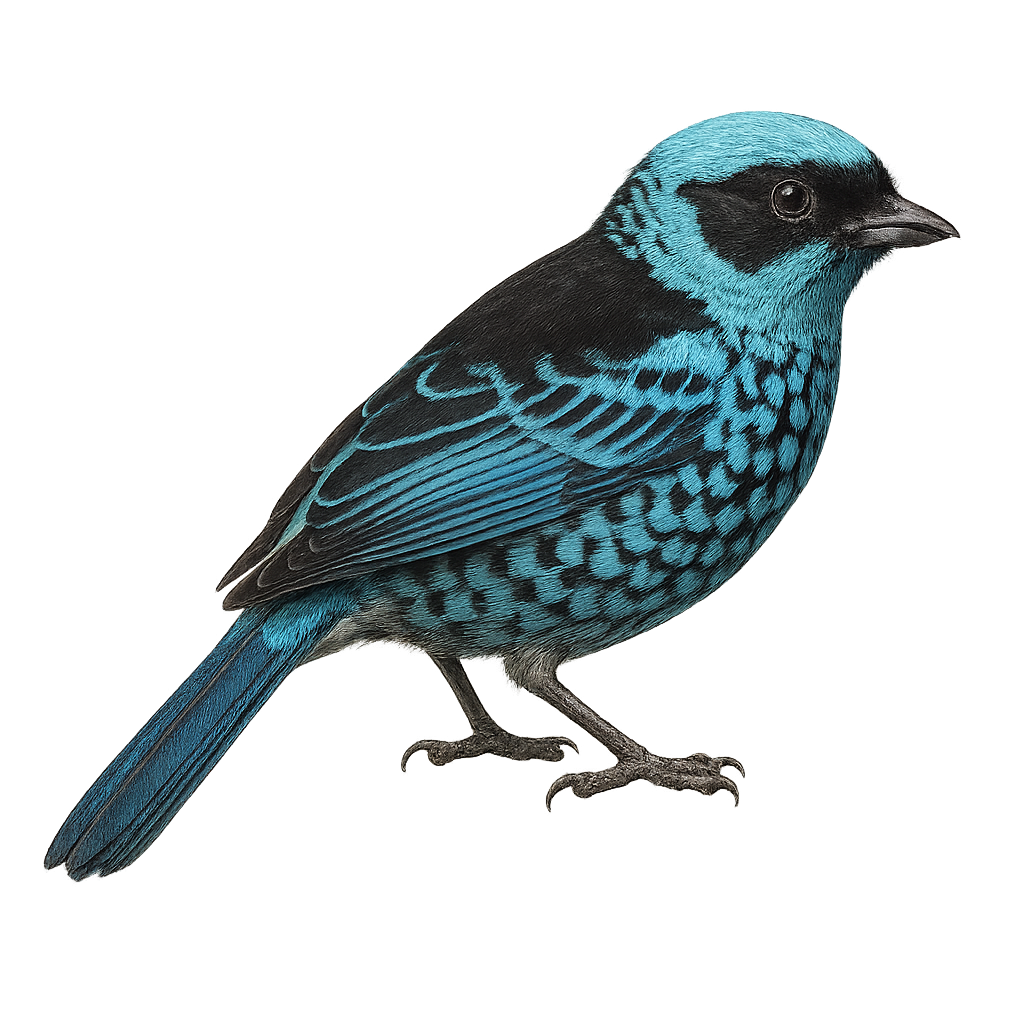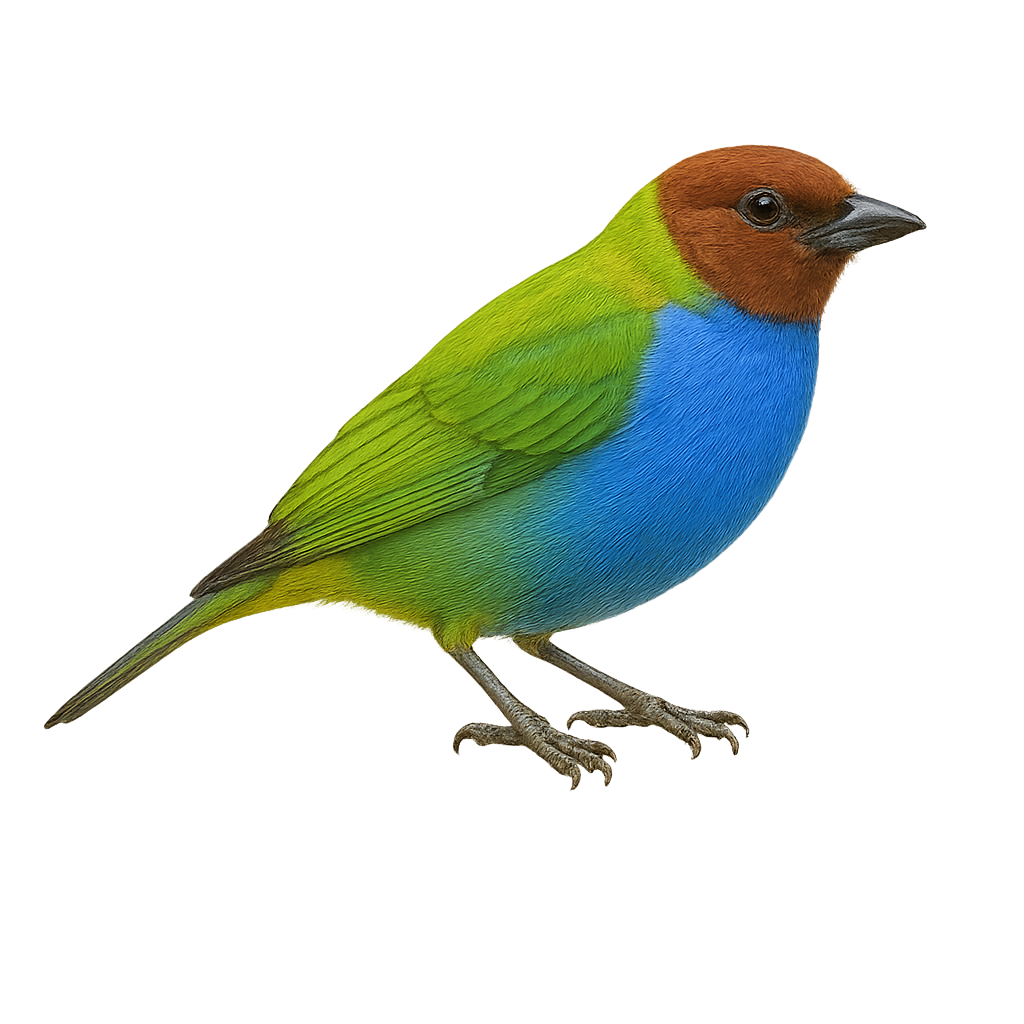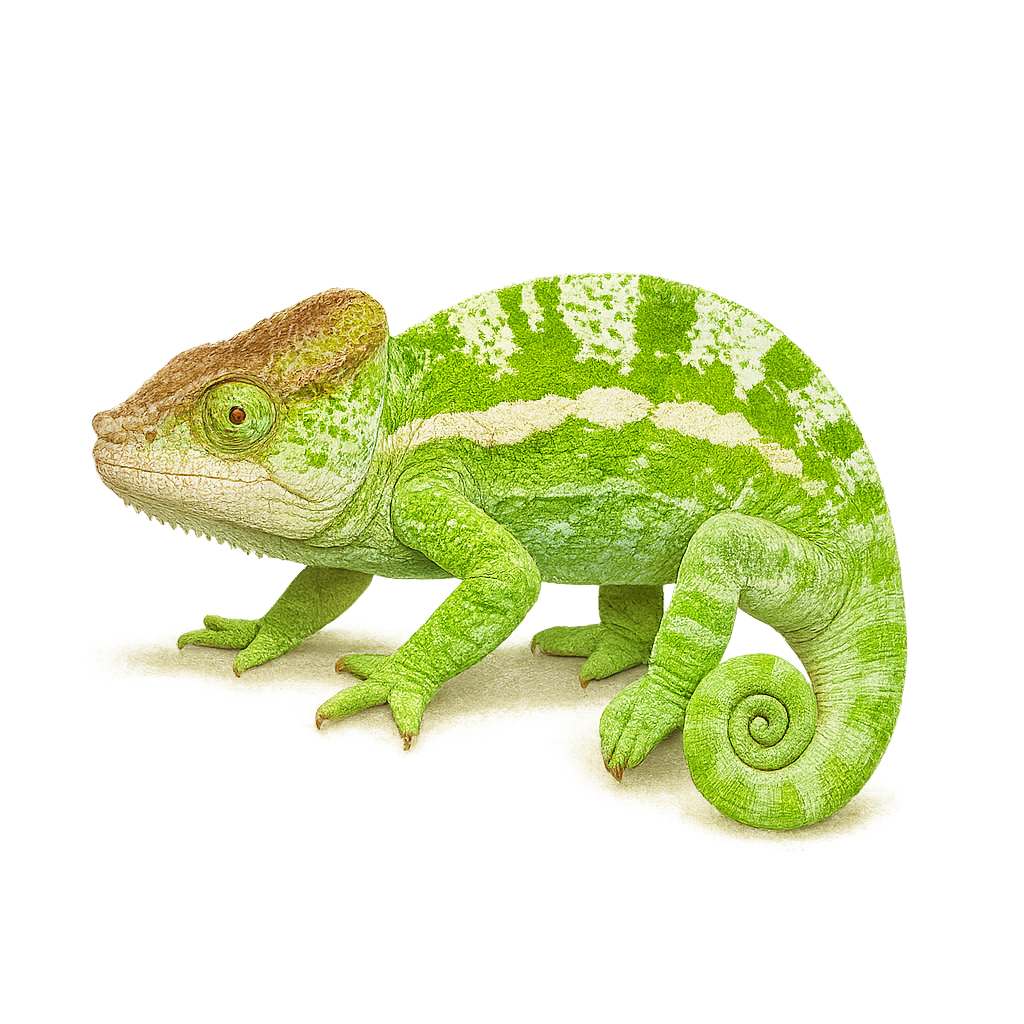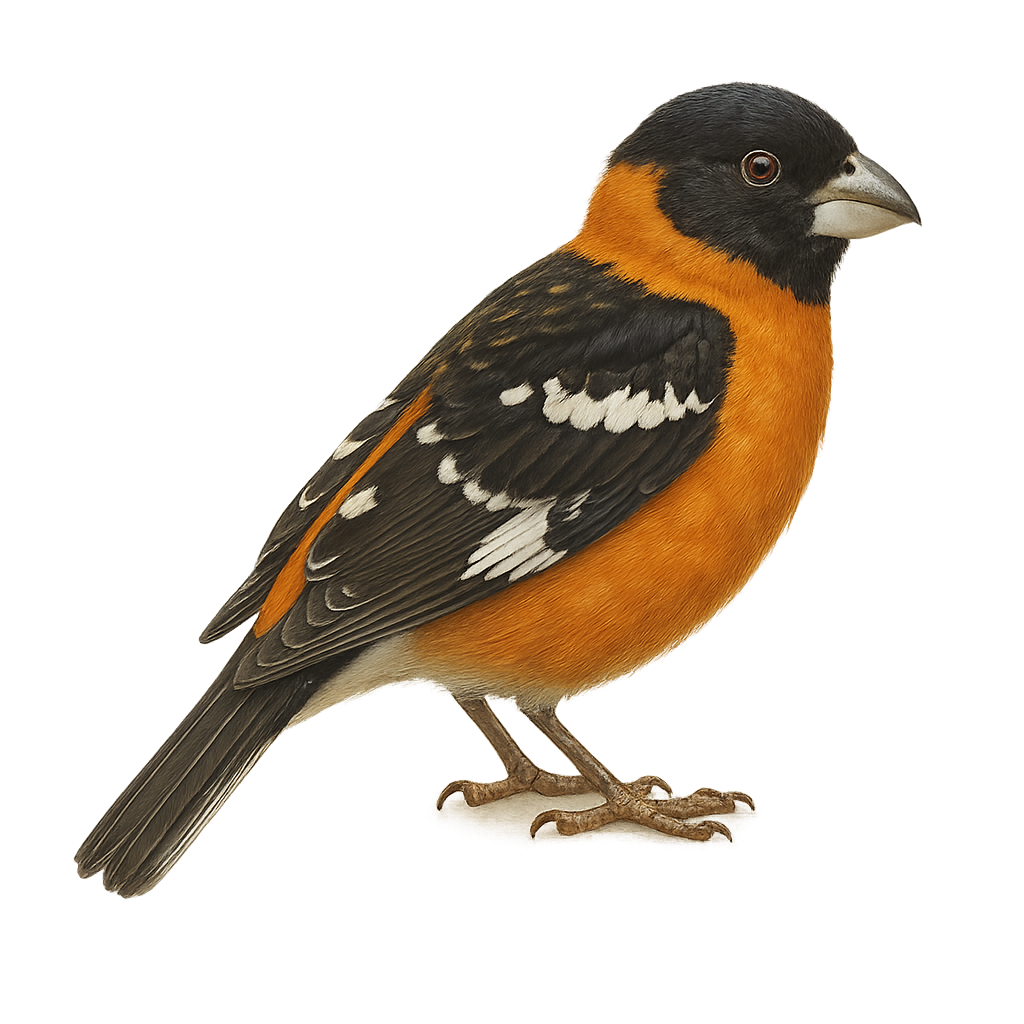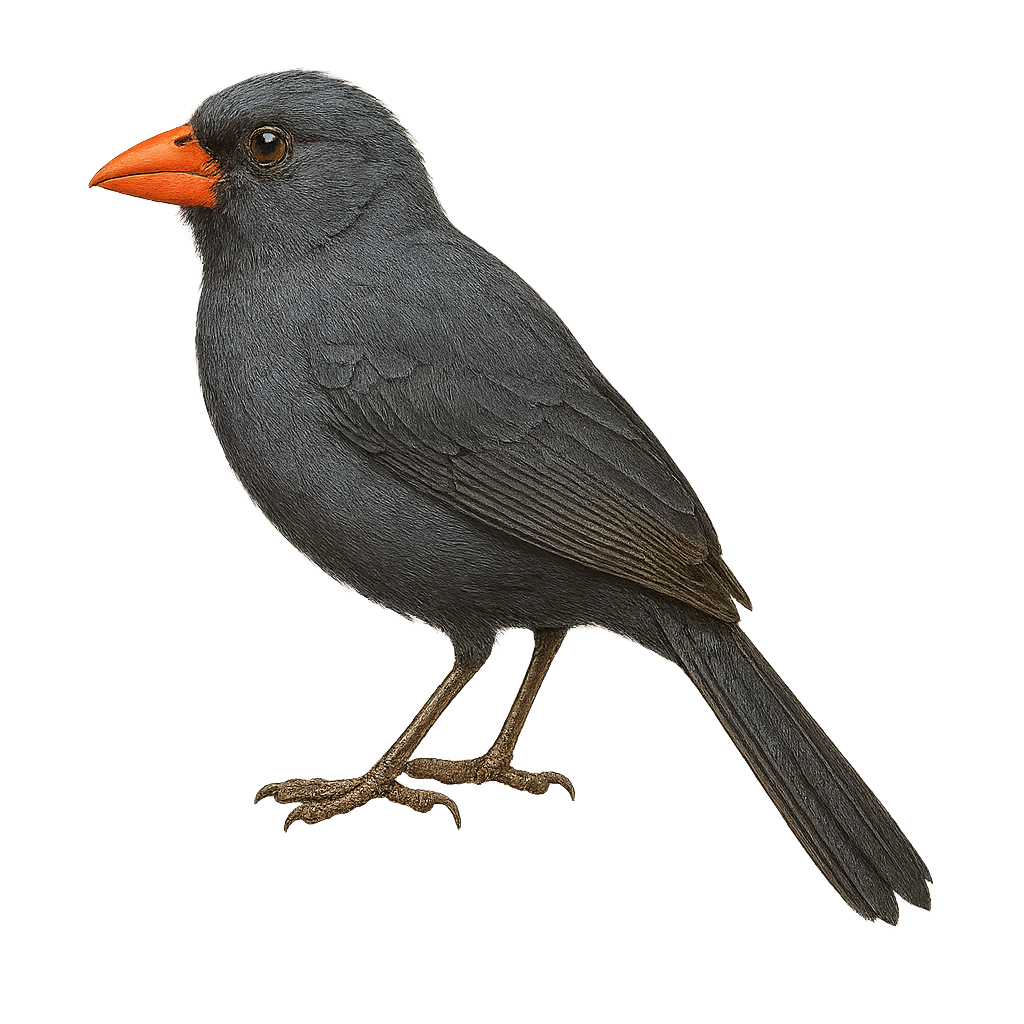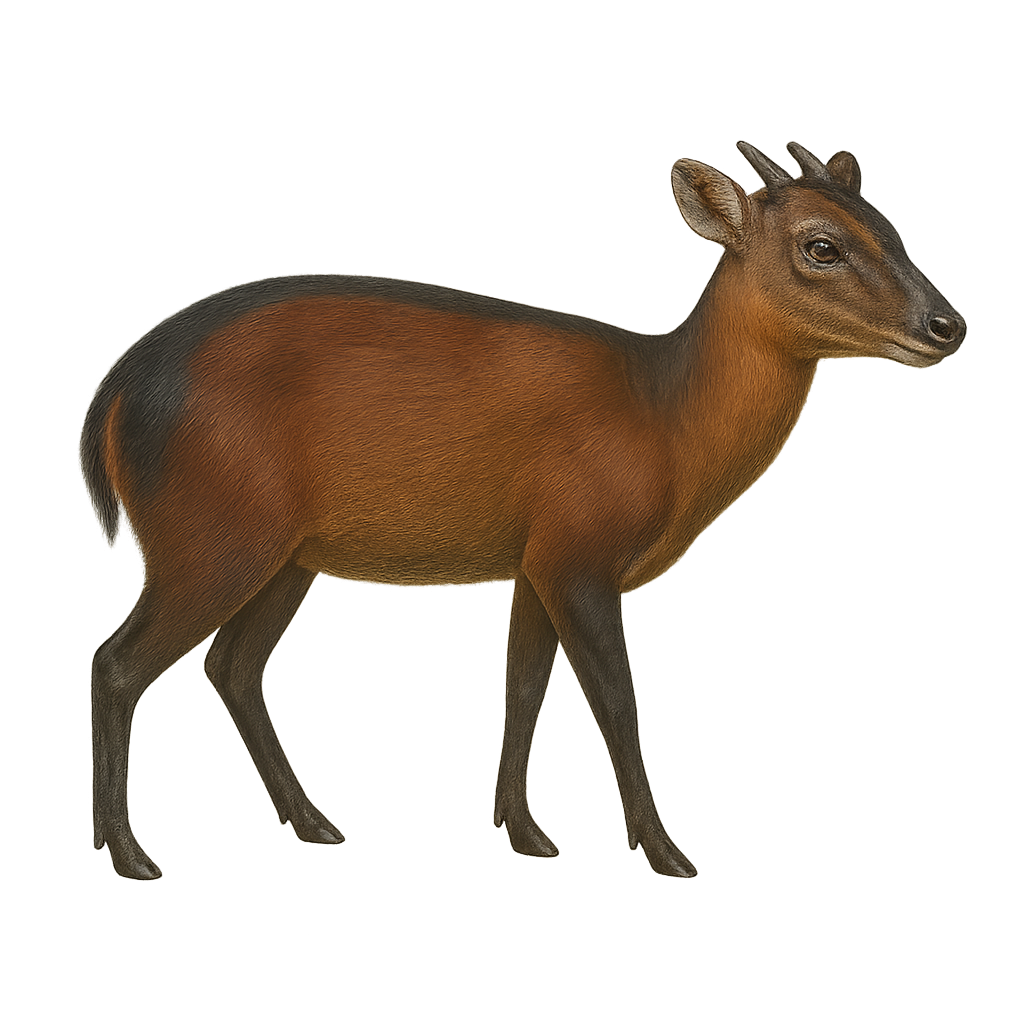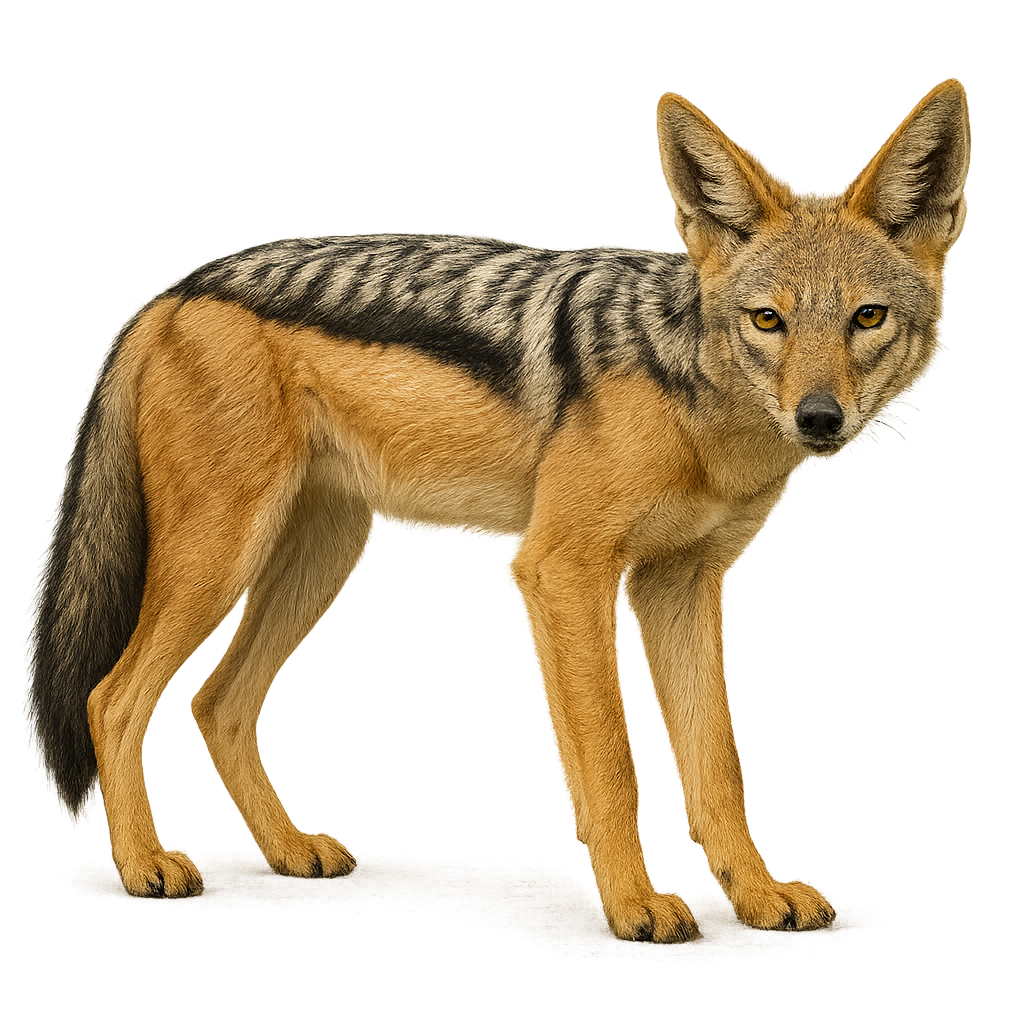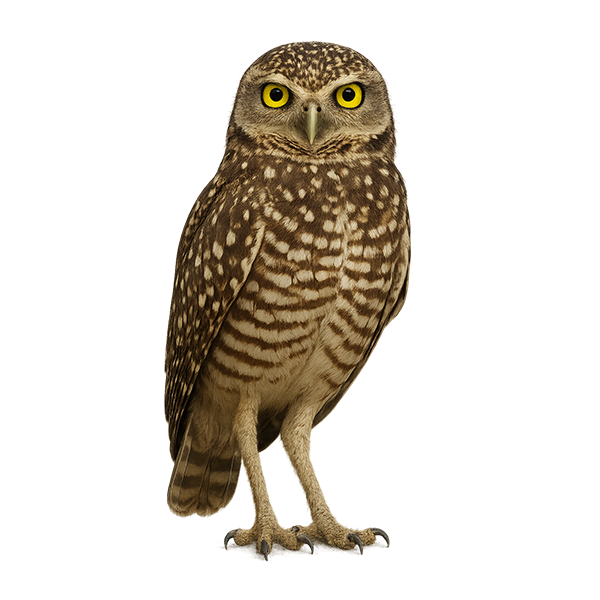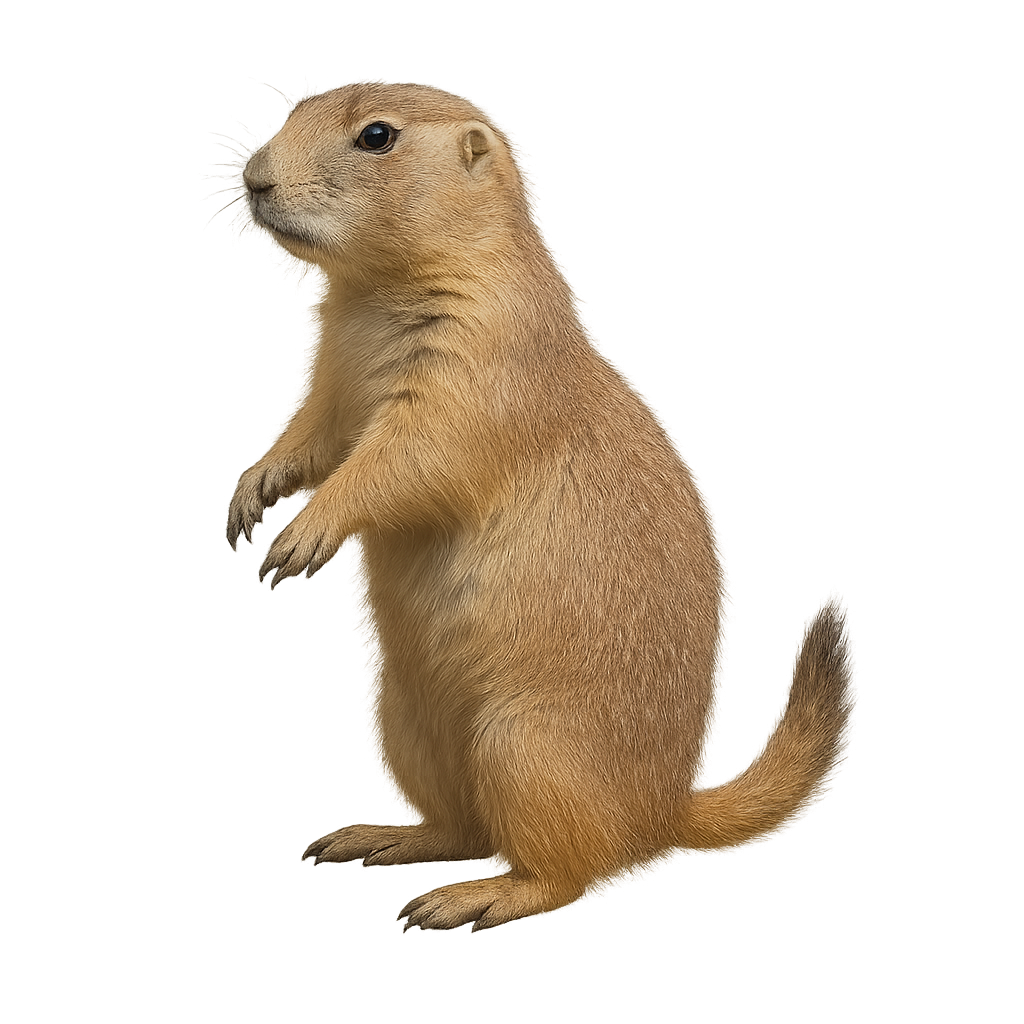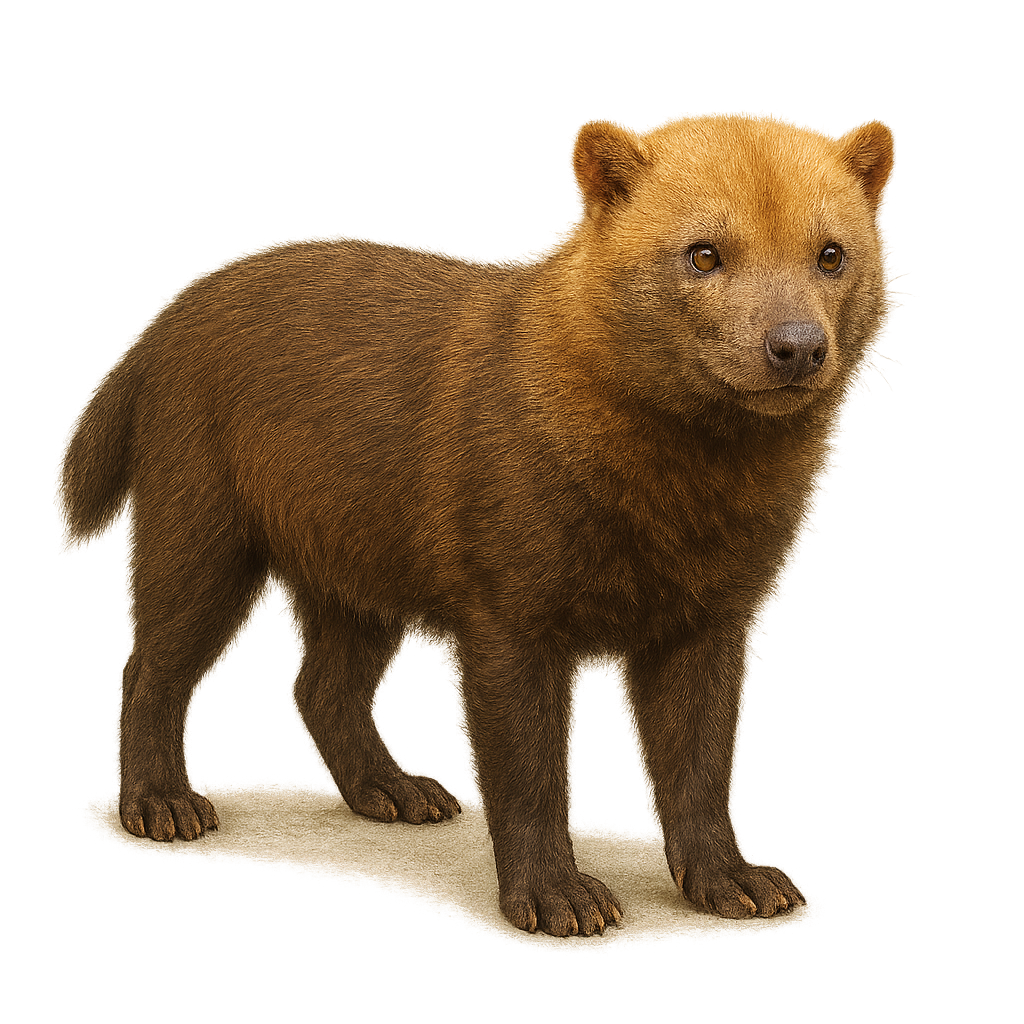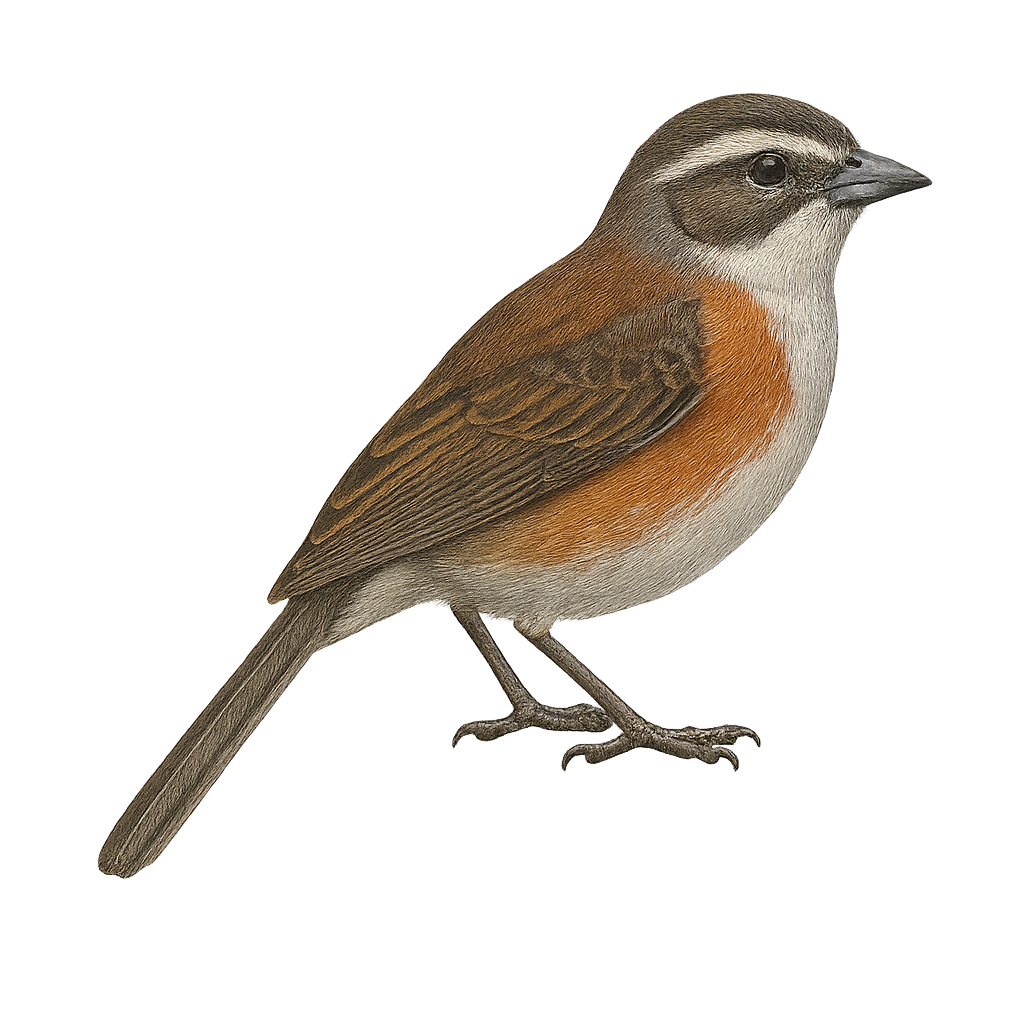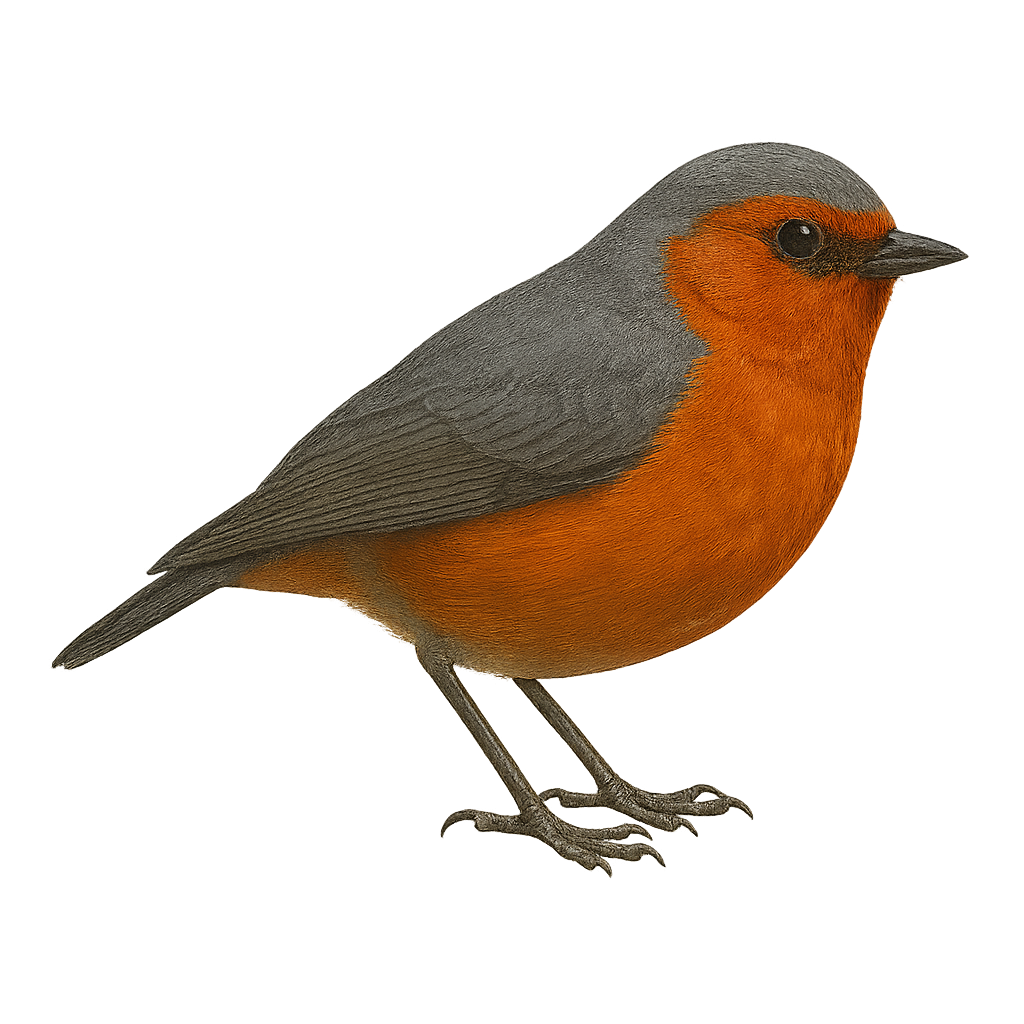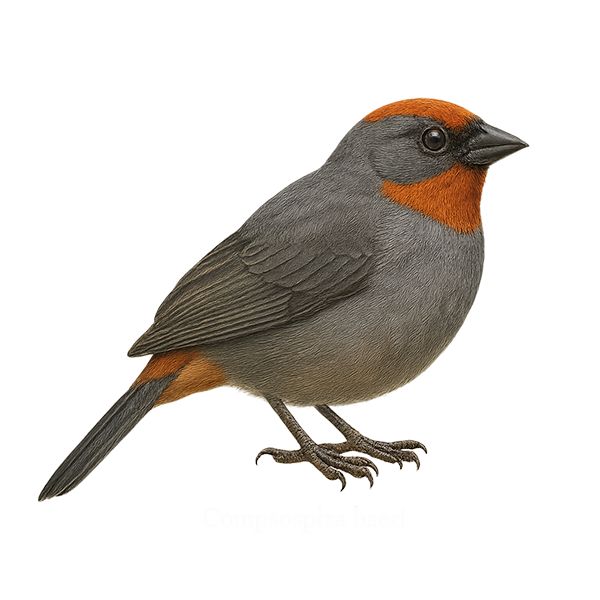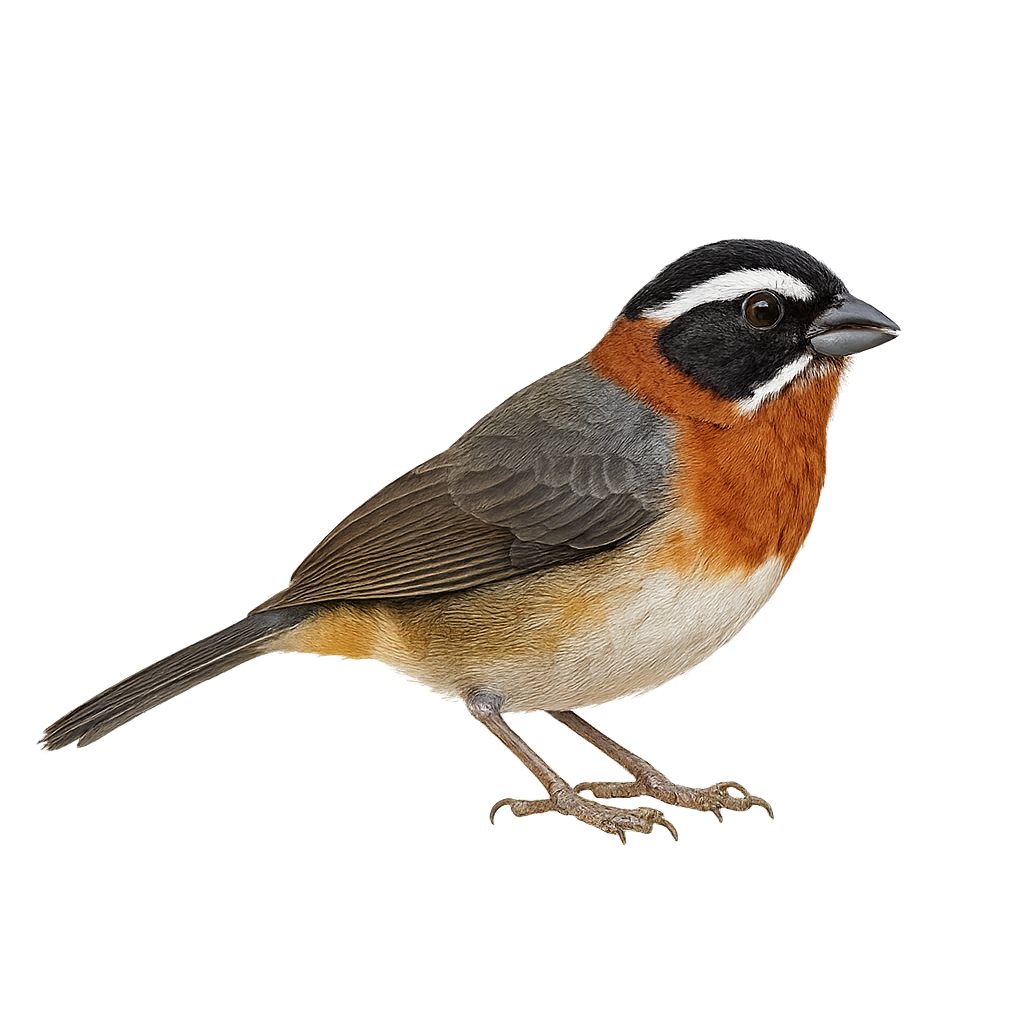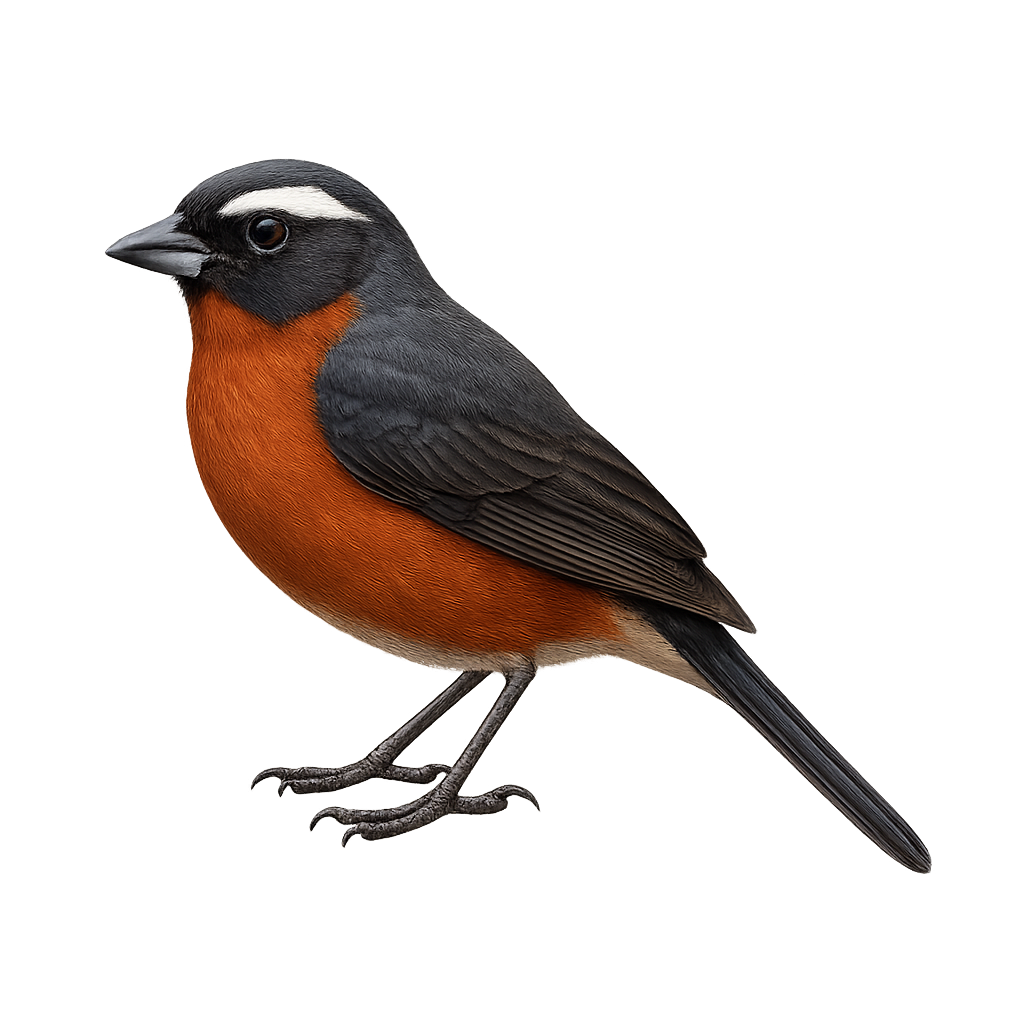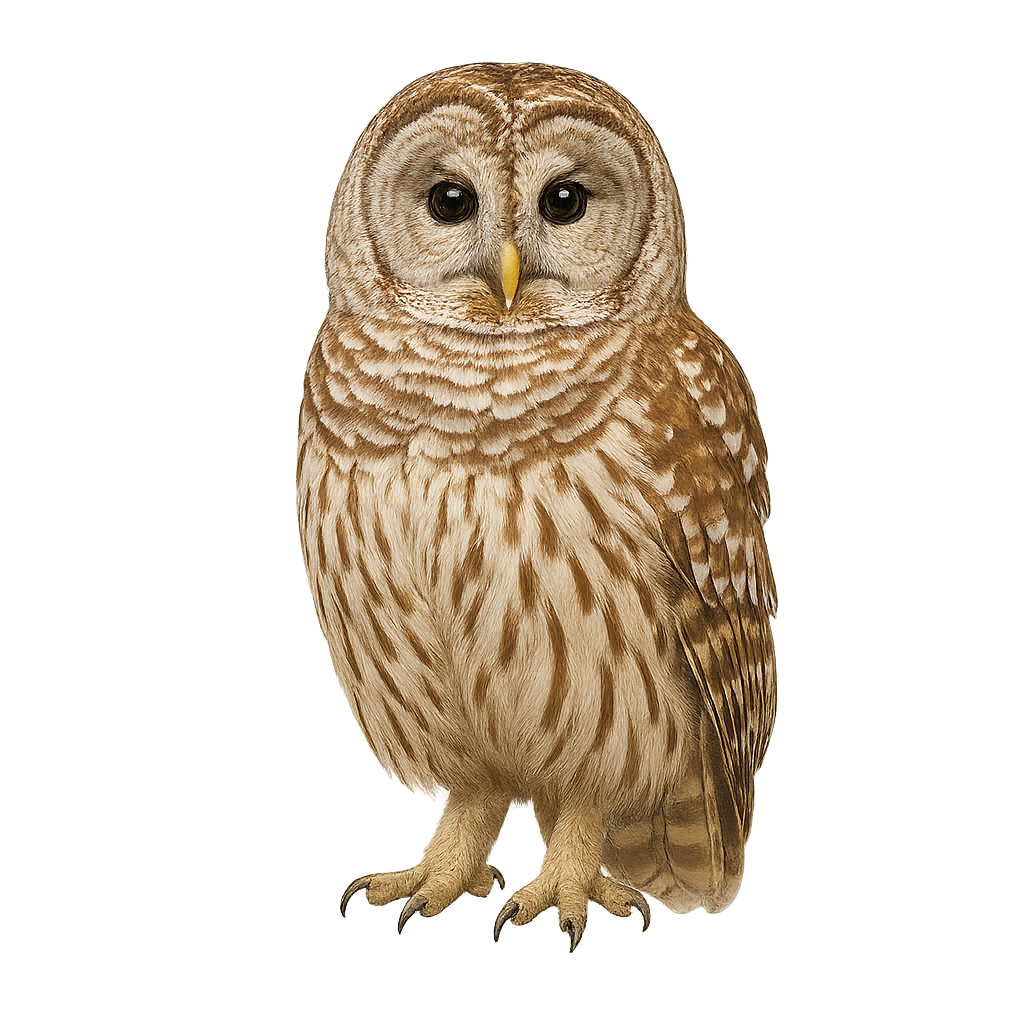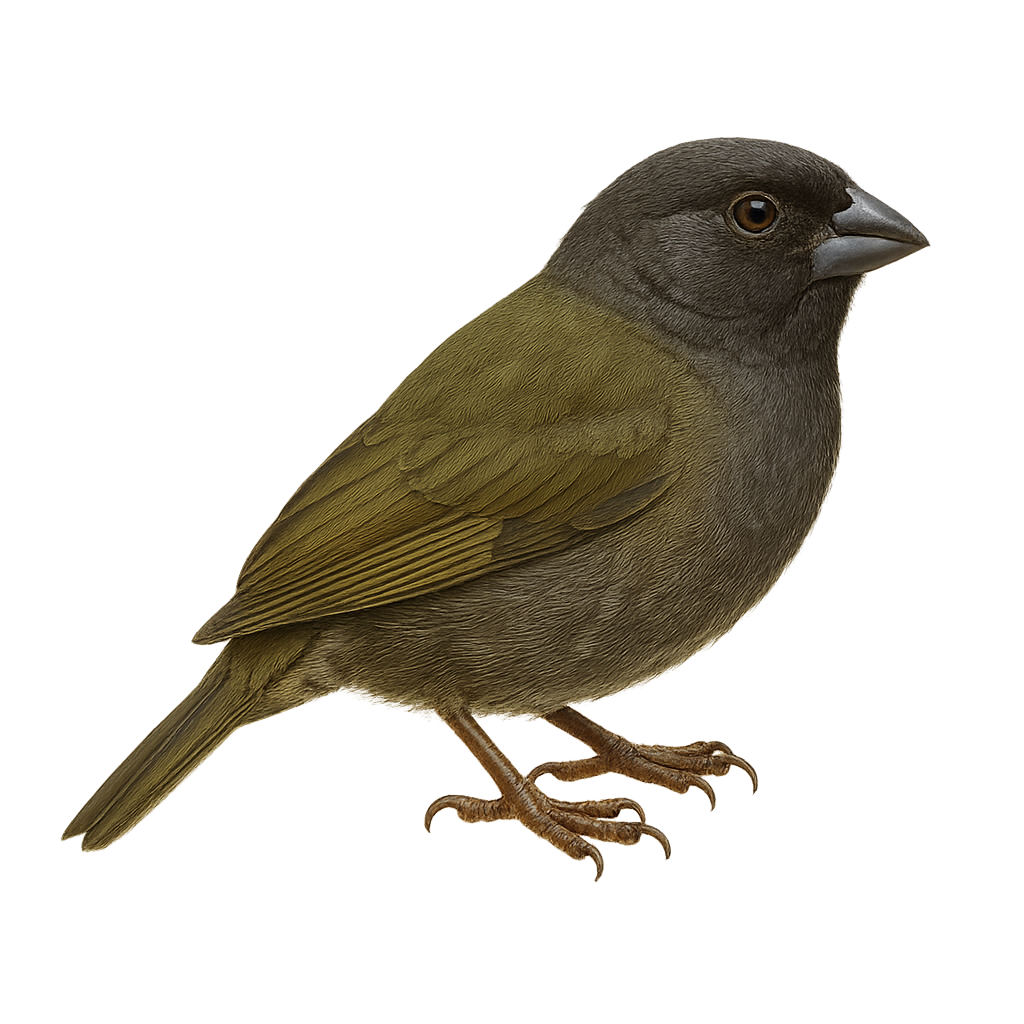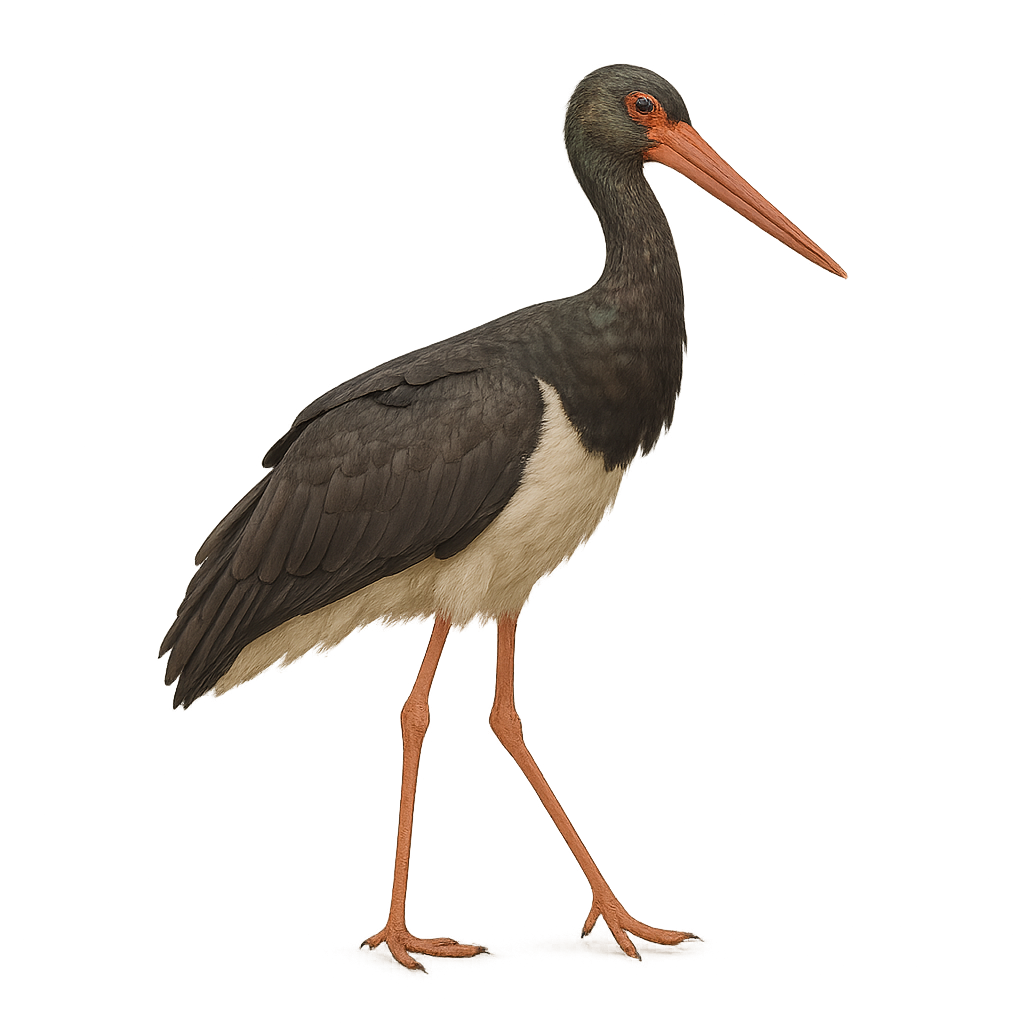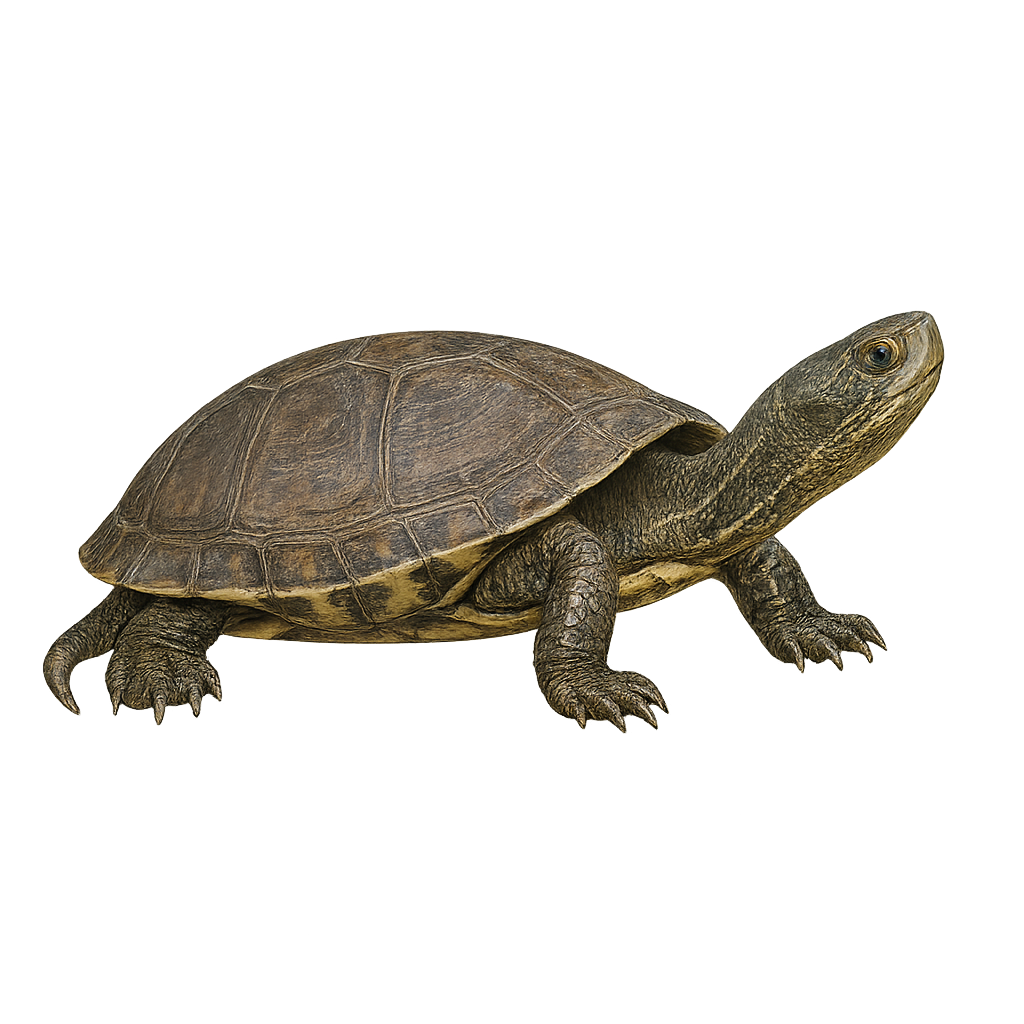The Blue-necked Tanager, scientifically known as Stilpnia cyanicollis, is a vibrant bird belonging to the Thraupidae family. It is easily identifiable by its striking blue head and neck, contrasting with a black body and green wings. This bird measures about 13 cm in length and weighs between 16 and 19 grams. It is primarily found in the humid tropical forests of South America, particularly in Colombia, Peru, Bolivia, and Brazil. The Blue-necked Tanager feeds mainly on fruits, nectar, and insects. It is often seen in small groups or pairs, actively moving through the canopy in search of food.
The Blue-browed Tanager, or Tangara cyanotis, is a small, colorful bird of the Amazonian tropical rainforests, easily recognized by its bright blue eyebrow contrasting with a black head and vivid green body. It is mainly found in the Amazon Basin, particularly in Peru, Bolivia, and western Brazil. It forages in small flocks in the canopy, feeding on fruits, nectar, and insects. Though not shy, it remains discreet, and its vibrant colors make it a favorite among birdwatchers. The species is considered stable.
The Black-backed Tanager is a colorful and fascinating bird native to the tropical forests of South America. It is distinguished by its vibrant plumage, mixing shades of green, black, and blue. This small passerine is often observed in groups, moving agilely through the canopy in search of fruits and insects. Its melodious and varied song adds a musical touch to its natural environment. Although primarily arboreal, it occasionally descends to the ground to feed. Its presence is an indicator of the health of tropical forests, as it relies on plant diversity for survival.
The Blue-backed Tanager, or Tangara vassorii, is a colorful and fascinating bird primarily found in the humid forests of the Andes. This small passerine is recognizable by its bright plumage, with a vivid blue back contrasting with a paler belly. Males and females display similar colors, although females are slightly less vibrant. These birds are often seen in small groups, feeding on fruits and insects. Their melodious song adds a musical touch to their natural environment. Although relatively common in their habitat, observing them often requires patience due to their wary nature and preference for dense, wooded areas.
The Bay-headed Tanager, scientifically known as Tangara gyrola, is a vibrant bird native to the tropical forests of Central and South America. It is easily identified by its striking green head, which contrasts with its body adorned in shades of blue, red, and yellow. This bird measures about 14 cm in length and weighs between 19 and 22 grams. Its diet consists mainly of fruits, but it also consumes insects and nectar. Bay-headed Tanagers live in small groups and are often seen actively moving through the canopy. Their song is a soft warble, and they play a crucial role in seed dispersal, aiding forest regeneration.
The Calumma globifer, or ball chameleon, is a species of chameleon endemic to Madagascar. This reptile is particularly notable for its globular eyes, which provide a 360-degree field of vision, a significant advantage for spotting prey and predators. Its skin, a vibrant green, can change color to blend into its surroundings or express emotions. The ball chameleon prefers humid forests and wooded areas, where it primarily feeds on insects. It is generally solitary and territorial, except during the breeding season. Although its habitat is threatened by deforestation, it remains relatively common in some parts of the island.
The Black-headed Grosbeak is a medium-sized songbird known for its striking black head and contrasting orange and white body. It primarily inhabits coniferous forests and open woodlands in North America. Its melodious song is often likened to that of a robin. This migratory bird feeds mainly on seeds, fruits, and insects, playing a crucial role in seed dispersal and insect population control. Its breeding season spans from spring to summer, during which it builds nests in trees or shrubs.
The Black-throated Saltator is a medium-sized bird belonging to the Thraupidae family. It is primarily found in the humid forests and wooded areas of South America, particularly in Brazil, Argentina, and Paraguay. This bird is characterized by its dark plumage, with a black throat contrasting with its lighter belly. The Black-throated Saltator is mainly granivorous, but it also feeds on insects and small fruits. It is often observed in pairs or small groups, actively moving through the canopy in search of food. Although not considered threatened, deforestation and habitat loss could impact its populations in the long term.
The Bay Duiker, or Cephalophus dorsalis, is a small forest antelope native to West and Central Africa. It is characterized by its reddish-brown coat with a distinctive yellow dorsal stripe. Measuring about 70 cm in length and standing 45 cm at the shoulder, it weighs between 15 and 20 kg. Both sexes have short, slightly curved horns. This duiker is primarily solitary, though it may be seen in pairs during the breeding season. It feeds mainly on fruits, leaves, and young shoots, playing a crucial role in seed dispersal. Its natural habitat includes dense forests, where it uses its small size to navigate through thick vegetation.
The black-fronted duiker is a species of duiker, a small antelope found in the dense forests of West and Central Africa. It is easily recognizable by its distinctive black flanks and small size. This species is primarily herbivorous, feeding on fruits, leaves, and young shoots. While generally discreet and difficult to observe, it is threatened by deforestation and hunting. Its population is declining.
The black duiker, or Cephalophus niger, is a small African antelope primarily found in the dense forests of West Africa. It is characterized by its dark, nearly black coat and compact size, measuring about 50 cm at the shoulder and weighing between 15 to 20 kg. Both sexes have short, slightly curved horns. Adapted to life in the undergrowth, it feeds mainly on fruits, leaves, and young shoots. Its discreet behavior and ability to slip through dense vegetation make it difficult to spot. It is often solitary, although pairs can sometimes be seen.
The black-backed jackal, or Canis mesomelas, is a medium-sized canid easily recognized by its distinctive coat. It features a black back contrasting with the rest of its body, which is usually tawny or grayish. This opportunistic predator is primarily nocturnal, although it can be active at dusk. It inhabits various environments, from savannas to semi-desert areas. The black-backed jackal is a social animal, often seen in pairs or small family groups. Its communication relies on a variety of vocalizations, including howls and barks. Although wary of humans, it adapts well to human-modified environments.
The Black-backed Jackal, also known as the silver-backed jackal, is a small canid native to Africa, particularly found in savannas and open grasslands. It is distinguished by its grayish coat with a black stripe running along its back, hence the name "black-backed". This coat helps it blend effectively into its environment. The Black-backed Jackal has a slender body and relatively long legs, allowing it to run at high speeds.
An opportunistic carnivore, it primarily feeds on small mammals, birds, insects, and carrion, but it can also eat fruits and plants. Although it is a solitary animal, the Black-backed Jackal can occasionally be seen in small groups, especially during the breeding season. While its status is not particularly threatened, it faces competition from other predators and the loss of its natural habitat.
The black-footed cat, Felis nigripes, is one of Africa's smallest felines, measuring about 36 to 52 cm in length with a tail of 13 to 20 cm. It weighs between 1 and 2.5 kg. Its coat is spotted with black on a tawny background, allowing it to blend effectively into the dry grasses of its natural habitat. This feline is primarily nocturnal and solitary, hunting small rodents and birds. It is known for its tenacity and aggressiveness, capable of taking on prey larger than itself. Although rarely seen, it plays a crucial role in the ecosystem by regulating small animal populations.
The Burrowing Owl, Athene cunicularia, is a small owl with brown plumage speckled with white, primarily inhabiting the grasslands, deserts, and agricultural areas of the Americas. Unique among owls, it nests in underground burrows, often dug by other animals like prairie dogs. Measuring about 20 to 25 cm in height, it has long legs that allow it to run swiftly on the ground. Its diet is varied, including insects, small mammals, and sometimes reptiles. Although diurnal, it is most active at dusk and dawn. This species is known for its adaptability to different environments, though habitat loss remains a threat.
The black-tailed prairie dog is a small social ground squirrel about 30 cm long with sandy-brown fur and a black-tipped tail, living in dense burrow colonies on North American grasslands. It feeds on grasses, roots and seeds. During the breeding season, males actively defend territories with alarm calls and erect postures.
The bush dog, or Speothos venaticus, is a medium-sized canid native to South America. It is characterized by its dark brown fur, short legs, and stocky body. Adapted to forest life, it is often found near water, where it hunts in packs. This social predator is known for its ability to take down prey larger than itself, thanks to exceptional coordination within its group. Although elusive, it plays a crucial role in the ecosystem by regulating prey populations. Unfortunately, deforestation and hunting have reduced its numbers, making it vulnerable to extinction.
The Bolivian Brushfinch, scientifically known as Poospiza boliviana, is a medium-sized bird belonging to the Thraupidae family. It is primarily endemic to the mountainous regions of Bolivia, where it inhabits humid forests and shrublands. Its plumage is a mix of gray, brown, and white, with distinctive markings on the head and wings. This bird is often seen in small groups, feeding mainly on insects and seeds. Its ability to adapt to various habitats makes it a resilient species, although deforestation poses a potential threat to its populations. The Bolivian Brushfinch is a fascinating bird to observe, especially due to its melodious song and interesting social behaviors.
The Bolivian Warbling Finch is a bird endemic to the Bolivian Andes, known for its distinctive plumage and melodious song. This medium-sized passerine features gray and brown hues, with lighter shades on its belly. It primarily inhabits shrublands and cloud forests, where it feeds on seeds and insects. Though discreet, it is often detected by its characteristic song. Its population is currently stable, but it remains vulnerable to environmental changes and deforestation. Conservation efforts are crucial to preserving its natural habitat and ensuring its long-term survival.
The Baer's Sparrow, or Poospiza baeri, is a small passerine bird belonging to the Thraupidae family. It is primarily found in the mountainous regions of South America, particularly in Argentina. This sparrow is characterized by its subtle plumage, often in shades of brown and gray, allowing it to blend into its natural habitat. It mainly inhabits high-altitude shrublands and open grasslands. Its song is melodious yet discreet, often heard before being seen. The Baer's Sparrow is a relatively suspicious bird, preferring to keep its distance from humans.
The Black-and-chestnut Warbling Finch is a small passerine bird belonging to the Thraupidae family. It is mainly found in the mountainous regions of South America, particularly in Bolivia and Argentina. This bird is distinguished by its gray and brown plumage, with a characteristic white stripe above the eye, giving it an expressive look. It inhabits humid forests and shrublands, where it primarily feeds on insects and seeds. The Black-and-chestnut Warbling Finch is a discreet bird, often seen in small groups or pairs. Its ability to blend into its environment sometimes makes it difficult to spot, but its melodious song often reveals its presence.
The Black-backed Sierra Finch, Poospiza nigrorufa, is a small passerine bird belonging to the Thraupidae family. It is primarily found in the mountainous regions of South America, particularly in Argentina, Bolivia, and Peru. This bird is characterized by its black plumage on the back and top of the head, contrasting with a rufous belly and chest. It inhabits shrublands and high-altitude grasslands, often near watercourses. The Black-backed Sierra Finch is a discreet bird, often seen in small groups or pairs. It feeds mainly on seeds and insects, which it finds by foraging on the ground or exploring bushes.
The Black-banded Owl, or Strix huhula, is a nocturnal bird of prey primarily inhabiting the tropical forests of South America. It is recognizable by its dark plumage, speckled with white bands, and its large dark eyes that provide excellent night vision. Measuring about 35 to 40 cm in length, it primarily feeds on small mammals, insects, and occasionally other birds. Its call is a deep, resonant hoot often heard at night. Though discreet, it plays a crucial role in the ecosystem by regulating prey populations.
The Brown Wood Owl, or Strix leptogrammica, is a nocturnal bird of prey belonging to the Strigidae family. It is primarily found in South and Southeast Asia, inhabiting dense forests and wooded areas. This owl is characterized by its dark brown plumage with lighter patterns, as well as its dark, expressive eyes. Known for its deep, resonant call, often heard at night, the Brown Wood Owl feeds mainly on small mammals, birds, and insects. It is a silent hunter, using its keen hearing to locate prey in the dark. Although relatively discreet, it plays an important role in the ecosystem by regulating rodent populations.
The Barred Owl is a large nocturnal raptor, easily identifiable by its circular face forming a facial disc and its large yellow eyes. Its plumage is primarily gray-brown, marked with dark streaks on the head, back, and wings, from which it gets its name. This owl has a robust, stocky body, with broad wings and silent flight, perfectly suited to its nocturnal hunting in forests.
It primarily inhabits mixed and deciduous forests, especially in regions of North America. The Barred Owl hunts small mammals like rodents, birds, and occasionally insects, which it captures using its ability to fly silently. It is a solitary predator, hiding during the day in tree cavities or abandoned nests of other animals. While its population remains stable, the Barred Owl is vulnerable to disturbances in its natural habitat, such as deforestation and urbanization. It is protected in many regions to preserve its forest habitats.
The Black Finch, or Melanospiza bicolor, is a small passerine bird endemic to certain Caribbean islands. It is primarily recognized for its glossy black plumage in males, while females display browner tones. This passerine is distinguished by its robust beak, adapted to its granivorous diet. It frequents dry forests, shrubs, and bushy areas, where it primarily feeds on seeds and small insects. Although discreet, the Black Finch is often spotted thanks to its melodious song. Its population is currently stable, but it remains vulnerable to disturbances in its natural habitat.
The Black-legged Stork, or Ciconia microscelis, is a large African wading bird with an elegant appearance, easily recognized by its pure white plumage, black wings, and dark legs. It is found mainly in sub-Saharan Africa, inhabiting moist savannas, marshes, and riverbanks. Usually seen alone or in pairs, it feeds on fish, amphibians, aquatic insects, and occasionally small reptiles. Its discreet behavior and wide range mean it remains relatively understudied. The species is generally considered stable, though local populations may be affected by wetland degradation.
The Black Stork is a large bird with dark, glossy plumage, characterized by its slender silhouette and long red legs and beak. Its plumage is primarily black, with a slight greenish tint and a metallic sheen on the wings and back. This migratory raptor is distinguished from its cousin, the White Stork, by its more discreet behavior and preference for wilder habitats. It primarily inhabits dense forests, wetlands, and mountainous areas of Eastern and Southeastern Europe and Asia.
The Black Stork primarily feeds on fish, amphibians, and small mammals, which it catches with its long beak while moving silently near rivers and lakes. Unlike the White Stork, it prefers isolated habitats, avoiding human areas. Its population has long been in decline due to deforestation, illegal hunting, and disturbance of its breeding habitats. However, conservation efforts have helped stabilize its populations in some regions.
The Brown Snake Eagle, or Circaetus cinereus, is a medium-sized raptor primarily found in sub-Saharan Africa. It is characterized by its uniform brown plumage and striking yellow eyes. This predator specializes in hunting snakes, capturing them with its keen eyesight and powerful talons. It inhabits savannas, open grasslands, and sparsely wooded areas. Its flight is majestic, often soaring at high altitudes in search of prey. The Brown Snake Eagle is a solitary bird, except during the breeding season when it forms pairs. Although its habitat is extensive, it is sensitive to human disturbances and habitat destruction.
The Balkan Terrapin, Mauremys rivulata, is a medium-sized aquatic turtle, typically measuring between 15 and 20 cm in length. It is recognizable by its olive-brown shell, often adorned with lighter patterns. This species is primarily found in Mediterranean regions, including Greece, Turkey, and the Balkans. It prefers aquatic habitats such as rivers, lakes, and marshes. The Balkan Terrapin is an omnivorous species, feeding on aquatic plants, insects, and small fish. Although it is relatively tolerant of human presence, it is threatened by habitat destruction and pollution.


